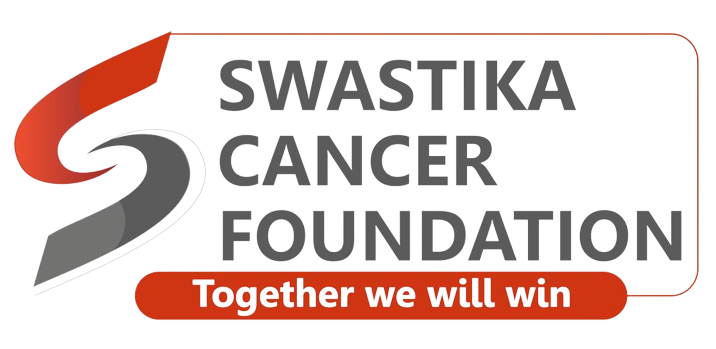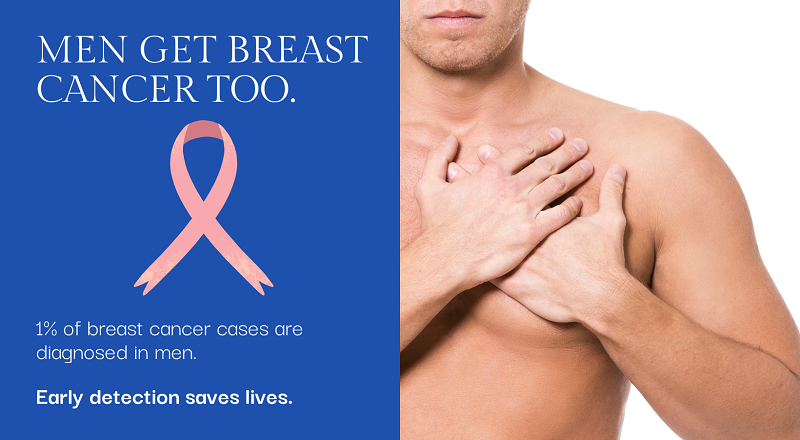Although traditionally associated with women, breast cancer is a disease that can affect men as well. Although it is not common, male breast cancer is a reality that is frequently disregarded. We will explore the symptoms, diagnosis techniques, available treatments, and the critical need for greater awareness of breast cancer in males in this extensive post.
Introduction
A. Brief Overview of Breast Cancer
Any gender can develop breast cancer; it all starts with aberrant cell development in the breast tissue. Men experience this condition in a different way, thus a more sophisticated knowledge is needed for proper diagnosis and therapy. The purpose of this essay is to clarify the complexities related to male breast cancer.
B. Men and Breast Cancer Prevalence
Men can also develop breast cancer, even though women are more likely to do so. Men account for about 1% of all instances of breast cancer, which emphasises how important it is to debunk the myth that breast cancer only affects women. Closing this information gap is essential to better results and early diagnosis.
Understanding Male Breast Cancer
A. Statistics and Prevalence
Approximately 2,650 new cases of male breast cancer are detected each year, making it a real health issue despite its rarity. These figures highlight the need of treating male breast cancer as a separate and serious medical condition.
B. Risk Factors for Breast Cancer in Men
It’s critical to comprehend the danger factors unique to guys. Men are more vulnerable due to age, hormone imbalances, specific genetic abnormalities, and a family history of breast cancer. Preventive measures and early intervention depend heavily on the identification and mitigation of these hazards.
C. Genetic Factors
BRCA1 and BRCA2 mutations have been connected to some occurrences of male breast cancer. Understanding these genetic predispositions makes it possible to develop preventative strategies that are specific to each risk profile, as well as early identification and focused testing.
Symptoms and Detection
A. Signs and Symptoms Specific to Men
It is essential to recognise signs specific to males, such as discharge, changes in the nipple, or a lump in the breast, in order to receive timely medical assistance. Men are urged to be watchful and proactive in identifying these symptoms.
B. Importance of Early Detection
The success of therapy is greatly increased by early identification. It is essential for timely intervention and successful results to encourage men to do routine self-examinations and to swiftly seek healthcare specialists in case of irregularities.
C. Self-Examination Guidelines for Men
Men are able to actively participate in their health when they follow monthly self-examination guidelines, similar to those for women. Seeking advice from medical specialists guarantees proper procedure and promotes successful self-monitoring.
Diagnosis and Screening
A. Diagnostic Procedures for Male Breast Cancer
It takes a mix of imaging studies, biopsies, and physical examinations to navigate the diagnostic terrain. Knowing these processes gives people who may get a diagnosis the information they need to make wise decisions regarding their health.
B. The Role of Mammograms
Mammograms are routinely performed on women, but because they are uncommon in men, they have a less prevalent role in breast cancer. On the other hand, mammography could be advised in some circumstances, highlighting the significance of customised diagnostic strategies.
Types of Breast Cancer in Male
A. Ductal Carcinoma in Situ (DCIS)
Given its propensity to worsen, DCIS, a non-invasive kind of breast cancer, has to be taken seriously. Knowing its nature enables one to make well-informed choices regarding monitoring and treatment.
B. Invasive Ductal Carcinoma (IDC)
Because IDC is the most frequent kind of breast cancer in males, thorough treatment techniques are required due to its invasive nature. Being aware of IDC guarantees that people are ready for any complications that may arise during their cancer journey.
C. Inflammatory Breast Cancer (IBC)
The aggressive character of IBC necessitates more notice despite its rarity. Early detection of signs like redness and swelling is essential for prompt medical attention.
Treatment Approaches
A. Surgery Options
Male breast cancer therapy still revolves around surgery, which includes excision of the tumour and, in certain situations, mastectomy. Being aware of the surgical choices enables people to make decisions that are in line with their health objectives.
B. Radiation Therapy
Radiation therapy is frequently used in conjunction with surgery or other therapies. A thorough grasp of treatment techniques is aided by the recognition of radiation’s function in killing cancer cells.
C. Hormone Therapy
Positive hormone-receptor Hormone treatment has a positive effect on male breast cancer. Understanding this therapeutic option illuminates focused strategies suited to particular cancer subtypes.
D. Chemotherapy
Chemotherapy is frequently required for male breast cancers that are aggressive. Knowing how chemotherapy targets quickly dividing cells across the body sheds light on how all-encompassing cancer treatment is.
Coping with Male Breast Cancer
A. Emotional and Psychological Aspects
Receiving a cancer diagnosis presents psychological and emotional difficulties. It is not a show of weakness to ask for help from friends, family, or experts; rather, it is an essential component of holistic treatment.
B. Support Systems for Men with Breast Cancer
Developing ties with organisations and support groups that focus on male breast cancer helps to promote a feeling of community. Recommendations and experiences from people who have gone through comparable struggles are priceless.
Survivorship and Follow-Up
A. Life After Treatment
The challenge of survival is adjusting to life after cancer therapy. In order to be well after therapy, it is essential to comprehend both the psychological and physical components of this journey.
B. Regular Follow-Up and Monitoring
Frequent follow-up visits are an integral part of continued treatment, not just a formality. Proactive management is ensured by keeping an eye out for any potential recurrence or new developments.
Breaking the Stigma
A. Addressing Misconceptions About Breast Cancer in Men
Delays in diagnosis are frequently caused by widespread beliefs. Demolish misconceptions by encouraging truthful information, encouraging early discovery, and raising general awareness.
B. Raising Awareness
Raising awareness proactively is necessary to break the stigma. Dispelling stereotypes about male breast cancer is mostly dependent on advocacy, education, and community engagement.
Prevention Strategies
A. Lifestyle Changes for Risk Reduction
A balanced diet and regular exercise are important components of a healthy lifestyle that can potentially lower the risk of breast cancer in addition to improving general wellbeing.
B. The Role of Regular Check-Ups
Preventive methods include routine medical checkups, which include breast inspections. Regular examinations are a crucial part of healthcare procedures since they guarantee early diagnosis and treatment.
Supportive Resources
A. Organizations Offering Support
Many organisations provide men with breast cancer specific resources and assistance. Making connections with these groups provides access to a helpful network and a plethora of knowledge.
B. Online Communities for Men with Breast Cancer
Men may use online groups as a forum to talk about their experiences, ask for help, and find comfort in the company of other people who have gone through similar struggles. Online assistance can have an equal impact as face-to-face interactions.
Real-Life Stories
A. Personal Accounts of Men Battling Breast Cancer
Personal narratives give the male breast cancer experience a human face by illuminating the struggles, victories, and resiliency of those who have faced this ordeal.
B. Overcoming Challenges and Spreading Hope
Showcasing inspirational tales of triumph inspires and gives others hope. These personal accounts act as rays of hope, showing that a breast cancer diagnosis does not mean the end of the world.
Conclusion
A. Recap of Key Points
Reiterating the main ideas highlights how crucial it is to comprehend the complex nature of male breast cancer. Understanding symptoms and available treatments is essential for efficient management.
B. Encouragement for Early Detection and Awareness
It is a call to action to empower men to actively participate in their health by being proactive about any issues connected to their breasts. The key to better outcomes in male breast cancer cases is early identification and awareness.



